The history of Blackpool and how it began is really interesting. Did you think that these seaside towns grew with the arrival of the railways? Local history goes back much further than that! Even further than those holidays of the Lancashire Mill towns.
- Way back in the Distant History of Blackpool…
- Where did the name 'Blackpool' come from?
- Early 1800's – History of Blackpool and Growth of the Town
- 1840's – Advent of the Railways
- 1860's – Growth of Entertainment
- 1870's – Beginnings of The Tower and Winter Gardens
- 1876 – History of Blackpool Borough
- 1880's – Arrival of the Tramway
- 1890's – Opera House, Tower, South Pier, Grand Theatre and Pleasure Beach
- 1899 – Promenades and The Pleasure Beach
- 1912 – The Blackpool Illuminations Begin!
- 1926 – Jubilee Year
- Mid 1900's Blackpool and Today
- More about the History of Blackpool and Growth of the Town
- While you’re here…
Way back in the Distant History of Blackpool…
The Carleton Elk
In 1970, layers of local history were peeled back like the layers of an onion! An exciting discovery was made in the shape of the skeleton of an elk. It was found on a site at Carleton, just across from Blackpool Sixth Form College.
You might think that an elk skeleton is unremarkable. But barbed arrowheads found with this carcass show that it was hunted by man. And this was over 11,000 years ago. It’s the earliest evidence of human habitation so far north in the UK. This photo shows it on display at the Harris Museum in Preston.
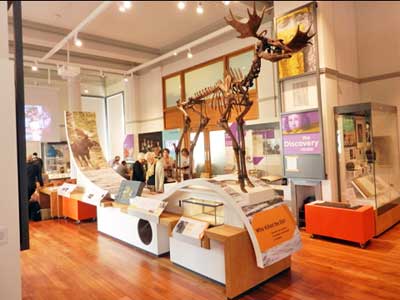
The Rossall Hoard
Still in the distant past, but fast forward to much more recent times. In 1840 Roman coins were found at Rossall, Fleetwood. The Rossall Hoard is a complicated story of intrigue and mystery surrounding the Hesketh family, the founders of Fleetwood.
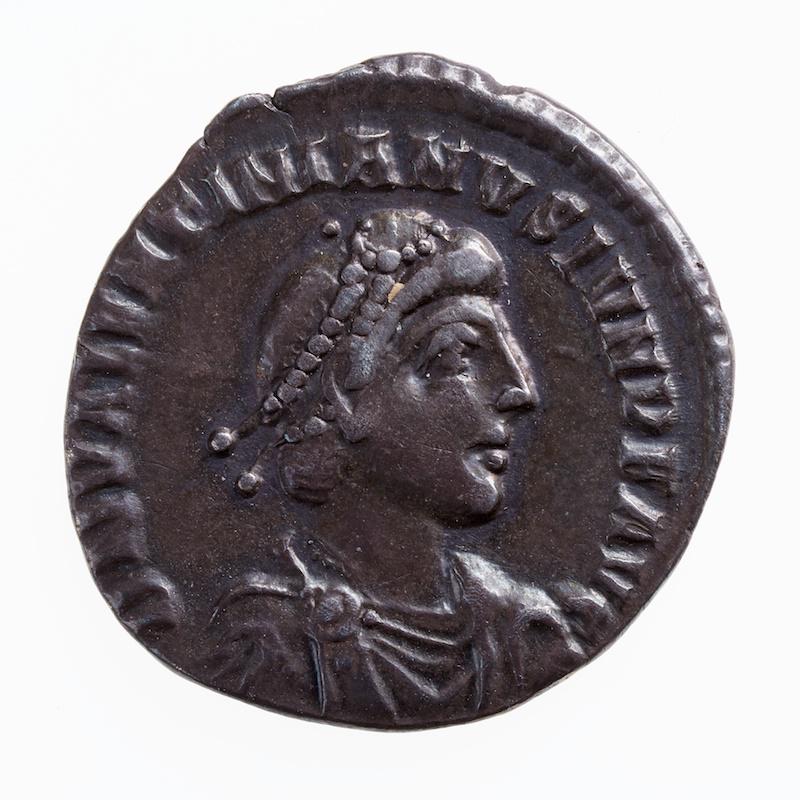
More coins were found at Hackinsall in 1926. These date from a period of occupation around AD 80. Many Fylde villages also appear in the Domesday book of 1086.
Where did the name ‘Blackpool’ come from?
Blackpool itself was first seen in medieval ages. It takes its name from the discoloured waters of ‘le pull’.
That was the discoloured stream draining Marton Mere and Marton Moss through peat lands. The stream ran alongside Blackpool Old Road and went into the sea near the present Manchester Square.
The name ‘Blackpoole‘ first appears in the 1602 Bispham parish baptismal register. ‘Foxhall‘ was the first house to be built in the area. Foxhall was built by Edward Tyldesley, the Squire of Myerscough, towards the end of the 1600’s.
Land Enclosure
After an Act of Parliament in 1767 a tract of sandhills was enclosed along the coast. These parcels of land were allocated to landowners in Bispham, Layton, Great and Little Marton. It also stipulated the layout of the long, straight main roads in the area, including Lytham Road, St Annes Road and Highfield Road.
Did you know? That Bispham is one of the oldest settlements in the area? King David 1 of Scotland granted the Shrewsbury Monks a charter of protection of their lands in Bispham in 1137.
The bracing fresh air from the Irish Sea has always been a draw to bring visitors to this coast. Friends of the Tyldesley’s of Myerscough were the first to come here, gradually followed by others.
Health Benefits of Sea Air
Four large hotels were catering for the well-to-do in society by the late 1780s.
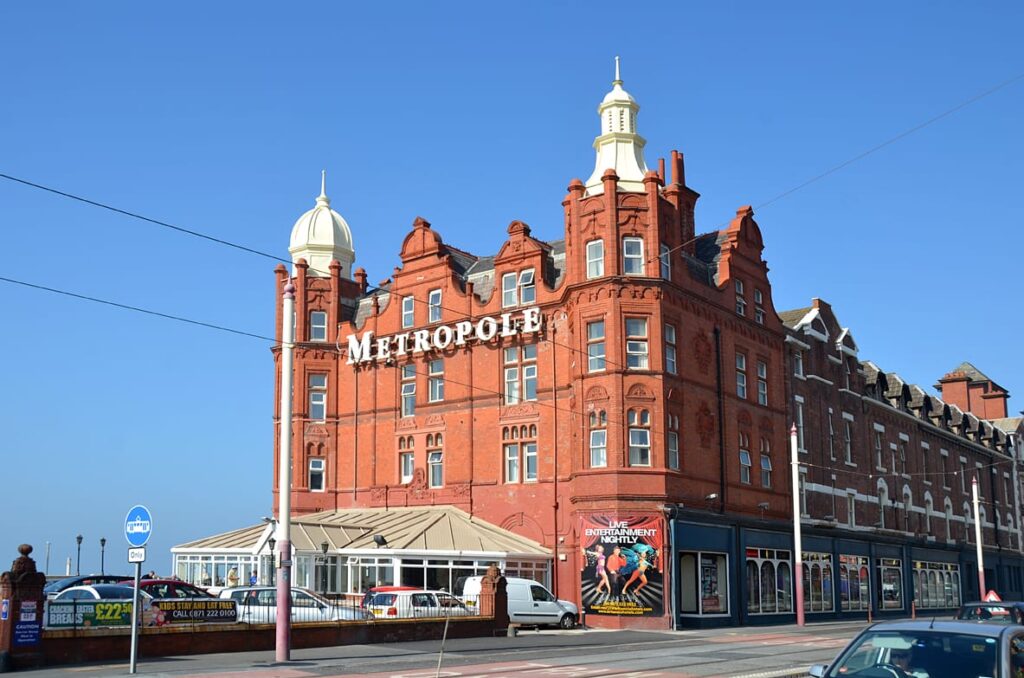
They included Bailey’s, which is now the Metropole (above) and Forshaw’s (now the Clifton Arms). Plus Hudson’s (at Lane’s End) and Hull’s (on the site of Weatherspoons on the promenade).
Other accommodation was offered at Bonny’s, (King Edward VII, Chapel Street) and Elston’s (later the York Hotel). The Gynn and other houses throughout the area also took people in.
At this time, visitors to the coast enjoyed horse riding on the beach and walking on the six yards wide promenade. They enjoyed archery facilities and bowling greens. Holiday accommodation is in the fifty or so houses along the seafront, some of which were residential. The health giving properties of sea air was the main reason for visiting Blackpool.
Early 1800’s – History of Blackpool and Growth of the Town
The main landowners of the time did little to develop the resort. In the early 1800’s Henry Banks took matters into his own hands. He’s often considered to be the ‘Father of Blackpool’.
In 1819 he purchased the Lane Ends estate and soon built the first holiday cottages. In 1837 his son-in-law built the first assembly rooms, the bulk of which still stands on the north-west corner of Victoria and Bank Hey Streets. (Marked where the red pin is on the Google map below).
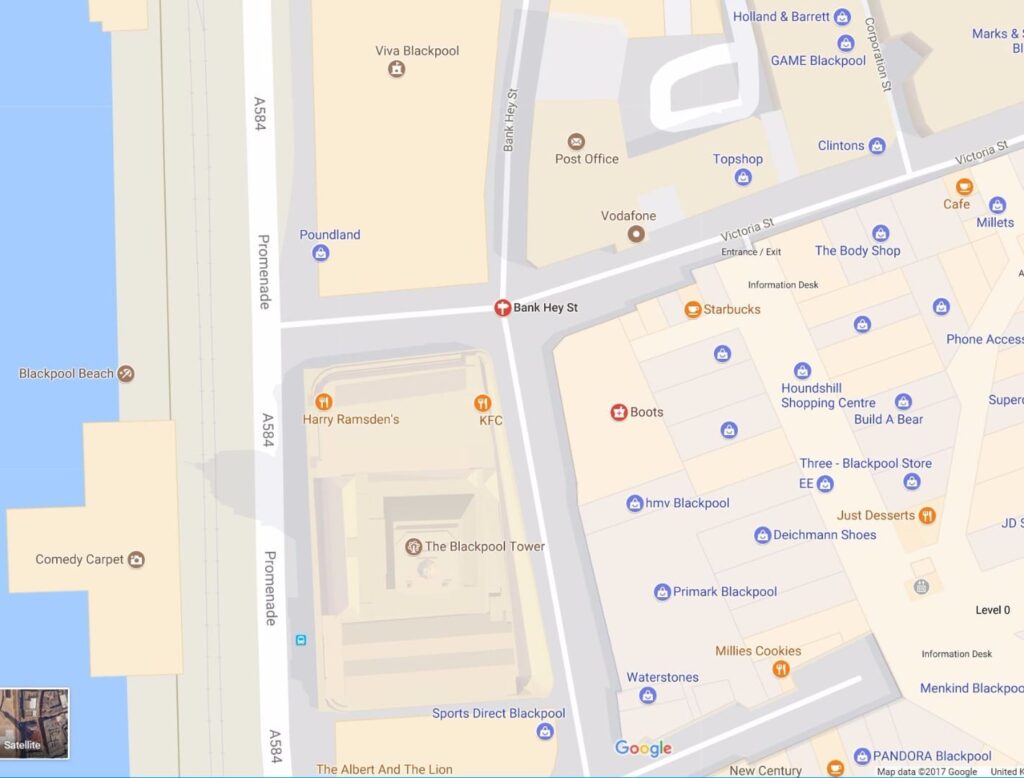
William Henry Cocker
On 9 December 1836, a baby boy was born on Hygiene Terrace, in a house that his father had built. The boy grew up to be perhaps the most influential man in the growth of the town of Blackpool. His father, John Cocker, had already built the first purpose-built place of entertainment – the Victoria Promenade.
Then in 1851, soon after marrying the daughter of another prominent landowner Henry Banks, William Henry Cocker bought Bank Hey House at the top of Victoria Street.
Banks was fondly known as the “Father of Blackpool”. William inherited all his valuable land and buildings. After becoming a general practitioner, he lived in a bungalow on Bond Street, before moving to his own bungalow “Bloomfield” in 1888, on Spen Gap Lane. You guessed it, in 1928, the road was renamed Bloomfield Road after his house. He finally moved to Whitegate Drive.
History all around us today
In 1875, he offered Bank Hey and its adjoining land for the building of the Winter Gardens. Part of Bank Hey House still stands inside the Winter Gardens today. You can see it in the walls of the Mazzei Cafe (below).
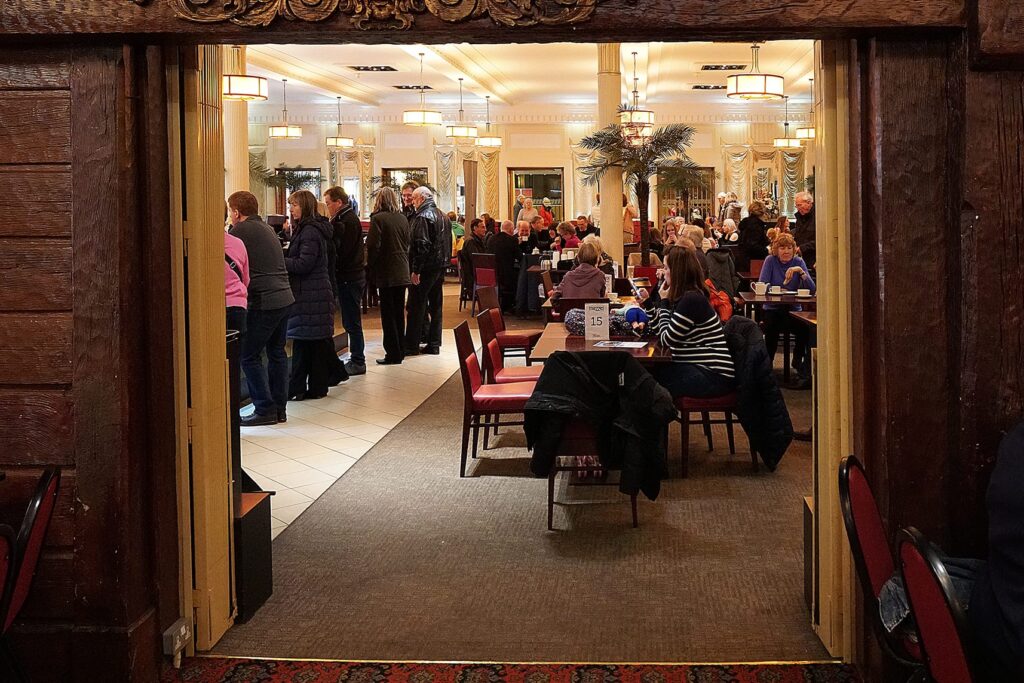
He also opened his aquarium at West Hey on the Promenade. After selling his property company to the Blackpool Tower Company, this was later to house the Tower.
In 1876, William became Blackpool’s first mayor and in 1896, its first Freeman. He died on 14 April 1911, being buried on 18 April in St John’s Church yard. Erected in 1926, the Cocker Tower in Stanley Park was built in his honour.
Look at this old British Pathe clip of Blackpool promenade from round about 1900. It’s like another world!
1840’s – Advent of the Railways
When the railways first emerged, the journey to Blackpool was a horrible one. It was two days from Yorkshire and a full day from Manchester. Incredible by today’s standards.
Sir Peter Hesketh Fleetwood transformed all that in 1840 with his Preston and Wyre Railway. It was originally built to serve his newly created port and town of Fleetwood.
However, the railways were suffering from a lack of funding. The cheap excursion trains from the mill towns of Lancashire saved them from collapse.
Visitors continued their journey from Poulton station to Blackpool by horse-bus or wagonette. Talbot Road station finally brought the railway straight to Blackpool on 29th April 1846.
1860’s – Growth of Entertainment
In those early 1860’s there was little entertainment to enjoy in Blackpool. The original Uncle Tom’s Cabin was offering refreshments, music and dancing. What remained of the first building was demolished in 1907. It had to be knocked down – because the crumbling cliff it perched on was eroding rapidly. The current Uncle Tom’s was built afterwards.
In 1863 North Pier was the first of the three to be built – made in cast iron on screwed piles. It’s now a Listed Building.
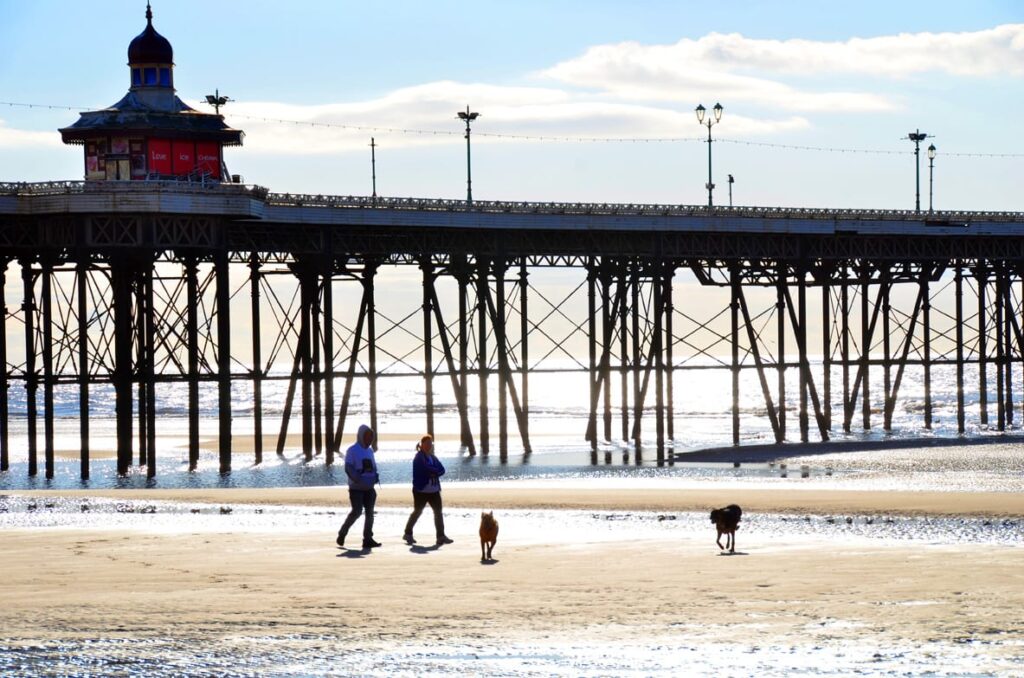
In 1867 the Prince of Wales Arcade opened (now the site of The Blackpool Tower). The following year saw new attractions opened including:
- the Talbot Road Assembly Rooms and Theatre Royal (the former Yates’s Wine Lodge and Addison’s night club)
- South Jetty
Another new Pier, or two!
Central Pier (below), only became well used in 1870 when Robert Bickerstaffe introduced open-air dancing for the “working classes”.

In 1870 a new Promenade is completed, with a sloping sea wall. This one stretched from South Shore to Claremont Park (just north of the Metropole hotel).
A little later in 1872, the extensive pleasure gardens of Raikes Hall opened. This is at the east of the town.
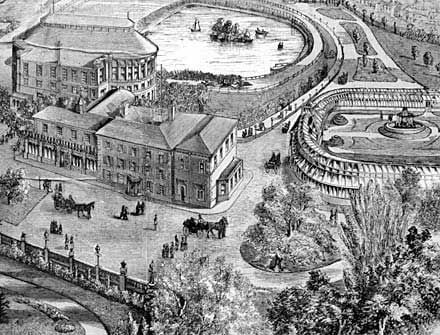
Within a few years they boasted a lake, racecourse, football and cricket ground, skating rink, aviary, monkey house, ballroom, theatre, switchback and many other attractions.
By the end of the century, the gardens were unable to compete with attractions nearer to the sea. At the end of the 1898 season Raikes Hall closed and in 1901 the Hall and gardens were sold off as building land.
1870’s – Beginnings of The Tower and Winter Gardens
- In 1872, Dr. W. H. Cocker had bought the Prince of Wales arcade and turned it into a private aquarium and menagerie. In 1875 he opened it to the public. Part of its south wing survived in the Tower’s aquarium.
- On the plot to the north, the Prince of Wales Theatre was opened in 1877, to which swimming baths were added in 1881.
- In 1875, the Winter Gardens Company was formed to build an indoor promenade and pavilion. It opened with much ceremony on 11 July 1878.
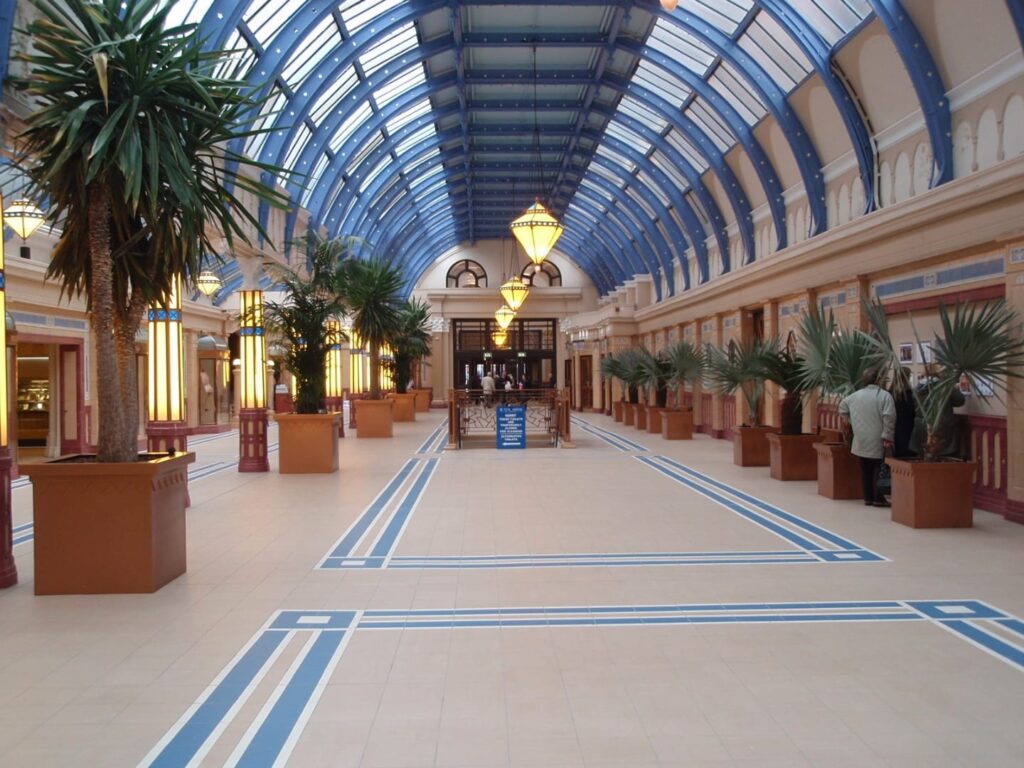
By this time, the existing railway line couldn’t cope with the large numbers of trippers wishing to visit. The single coastal railway line was rebuilt as a double track and linked with the Kirkham to Lytham line. The site of the current Coral Island became the principal station.
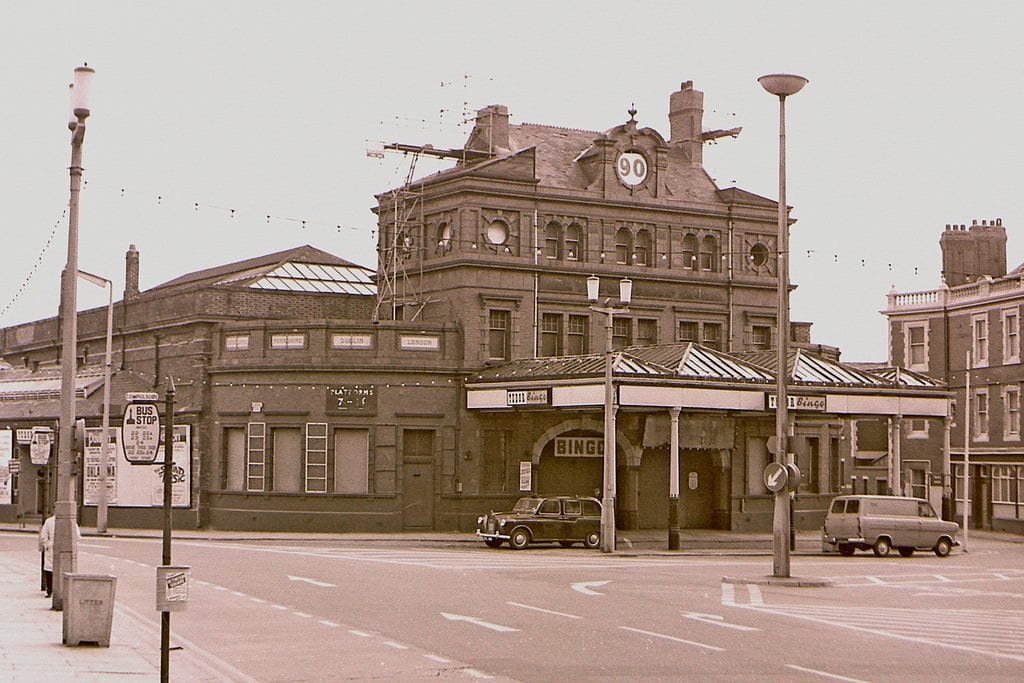
Blackpool’s motto is ‘Progress’. Things never stand still in this town! The next chapter in the history of Blackpool and growth of the town is about to begin. Excitingly, Central Station is to be redeveloped once again.
1876 – History of Blackpool Borough
Blackpool received the Charter of Incorporation as a Borough on 21 January 1876. The 1877 season was a successful one which saw the opening of the Borough Theatre. However, the following years saw the resort in a depression which threatened the town’s future.
In 1879 the Council held a grand fete and Blackpool Carnival to attract the crowds, including a ‘Naval Attack on Blackpool’. This huge event drew crowds of 100,000 spectators.
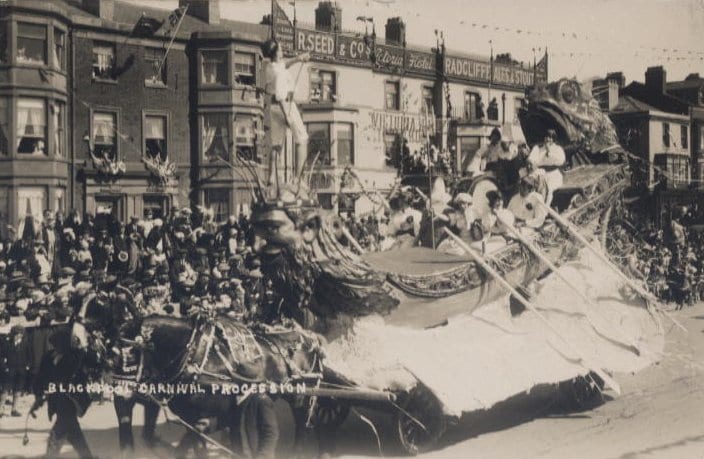
Another spectacular carnival and procession was held in 1923. Then a modern Blackpool Carnival made a come back in 2017.
Take a look at this British Pathe clip of Blackpool Carnival in 1923 –
1880’s – Arrival of the Tramway
By now, huge numbers of working class people were coming to Blackpool, rather than the previous small numbers of visiting gentry.
Once again the transport infrastructure didn’t meet demand of the huge passenger numbers. And so the country’s first permanent electric street tramway opened on 29 September 1885. It originally ran from Cocker Street to South Shore, and of course it’s still in operation today.
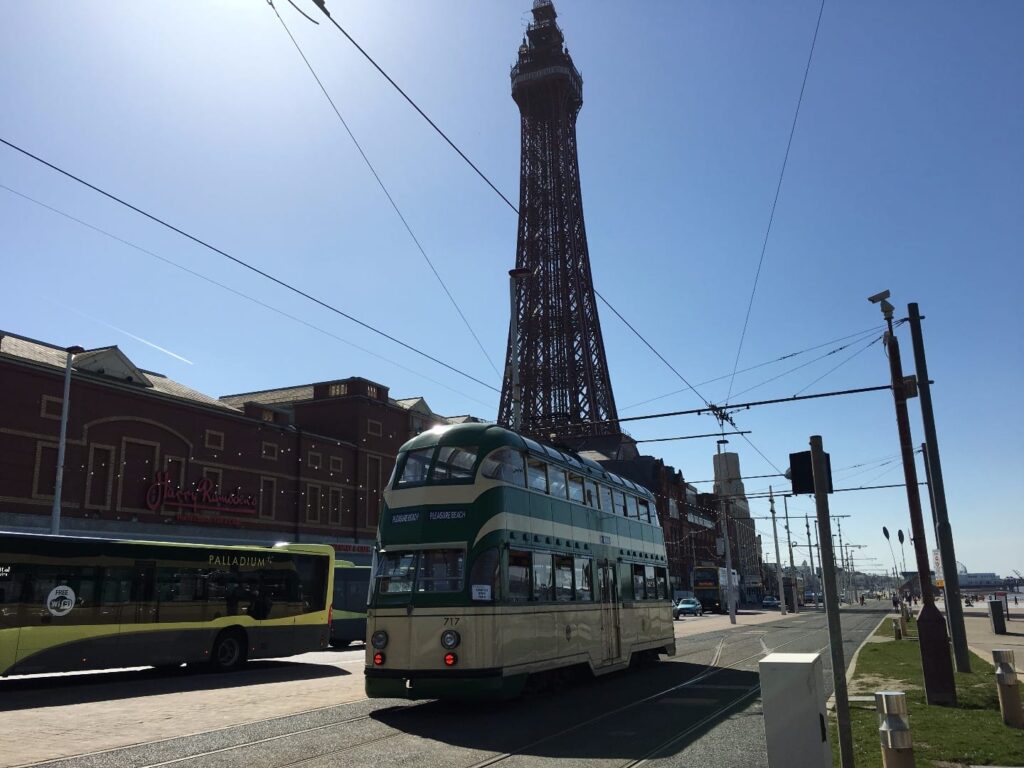
1890’s – Opera House, Tower, South Pier, Grand Theatre and Pleasure Beach
The 1890s saw a huge entertainment boom to provide for the estimated 250,000 visitors that the resort could accommodate. In 1889 the original Opera House was built in the Winter Gardens complex.

In 1894 The Blackpool Tower opened. On the 1910 Godfrey Edition map (see below) map you can read about the trials and tribulations of the financing of Blackpool Tower. It’s hard to imagine the place without it now. It was built thanks to the intervention of John Bickerstaffe, after whom the new council buildings at Talbot Road are named.

In 1893 Victoria Pier, now called South Pier opened. There’s more about the history of Blackpool South Pier here.
The year after, in 1894, the beautiful Grand Theatre opened in Church Street. Read about the history of Blackpool Grand Theatre here
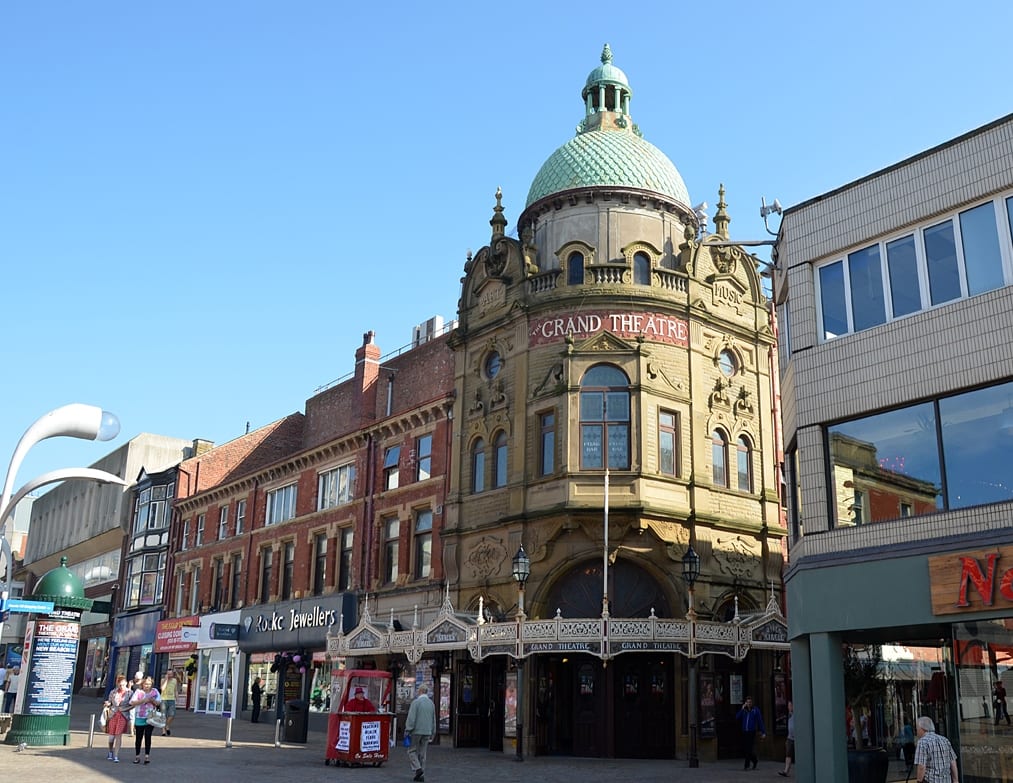
1899 – Promenades and The Pleasure Beach
A number of other venues opened in following years. In 1899 the three tier promenade was completed between Carleton Terrace and the Gynn.
The promenade and sea defences along the whole of the Fylde Coast have been constructed in sections, often after flooding or erosion.
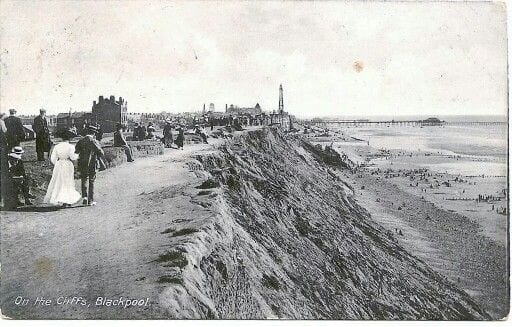
North shore promenade and colonnades stood well as a testament to Victorian Engineering. Central promenade was completed between 1902 and 1905, reclaiming 22 acres of land from the sea between North and South Piers.
Blackpool Pleasure Beach was originally the place where gypsies and fairground artists gathered.
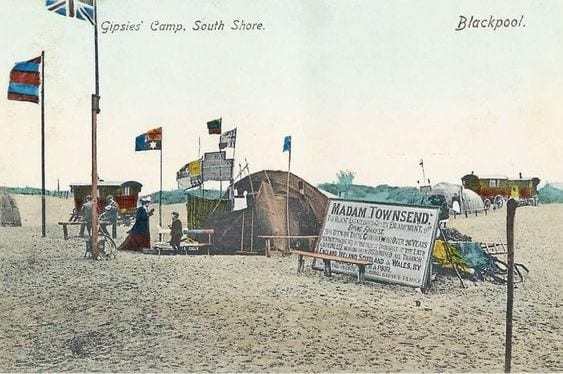
One of the first rides was Sir Hiram Maxim’s Captive Flying Machine built in 1904. It’s still there and operating today, albeit with alterations made over the years.
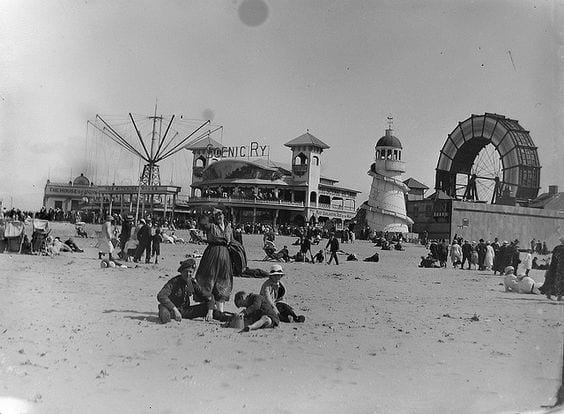
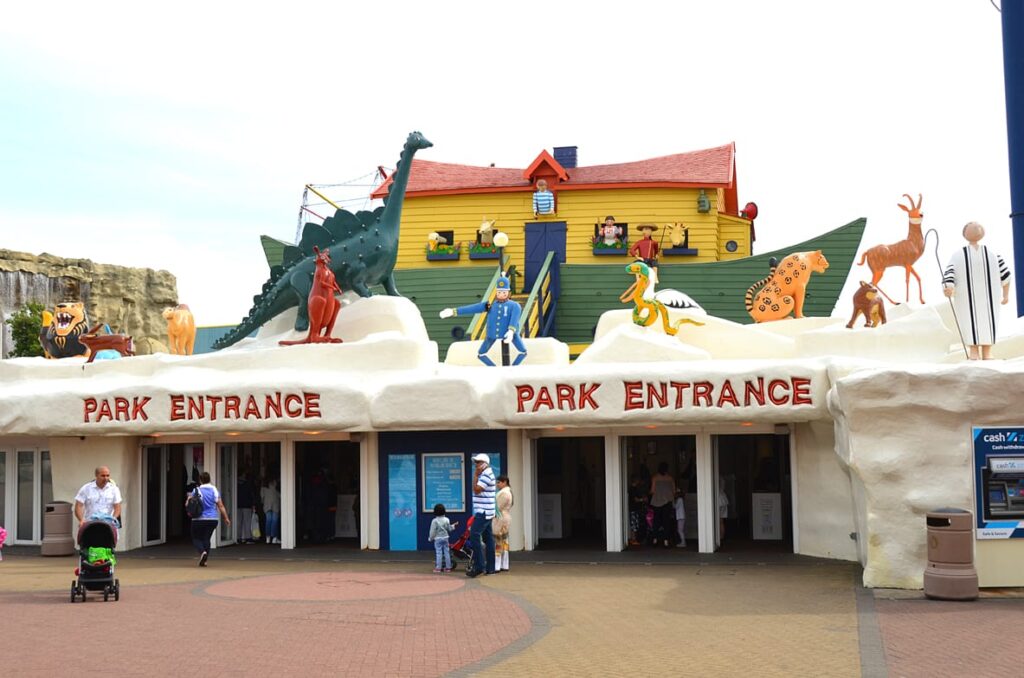
1912 – The Blackpool Illuminations Begin!
Queen Victoria’s Jubilee in 1897 saw the first illuminated tram travel on the seafront.
In 1912 Princess Louise (Queen Victoria’s daughter) visits Blackpool to open the new promenade at the side of the Metropole Hotel. The first static illuminations are erected here to welcome her – and described as ‘artificial sunshine’. There were breaks in the display for the two World Wars but they’ve shone every other year since.
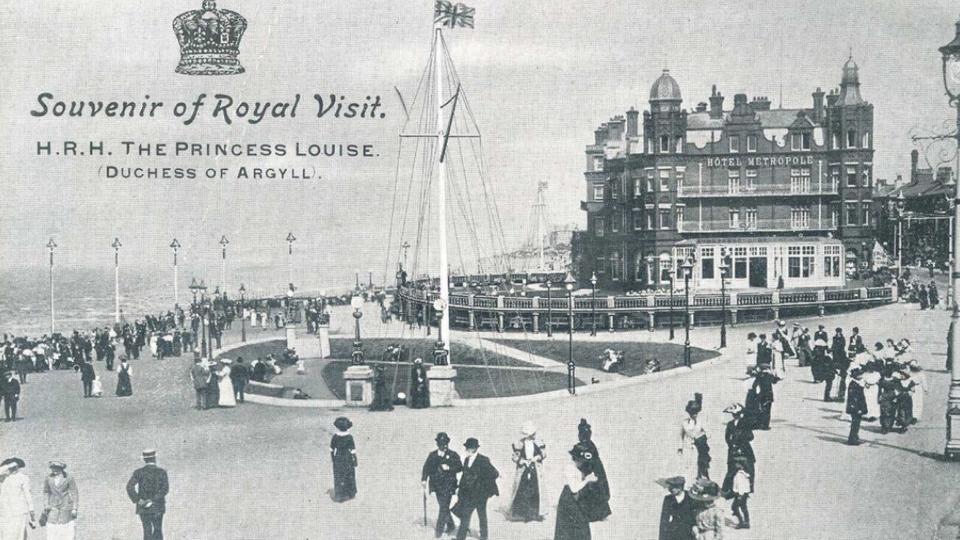
- Find out more about the history of the Blackpool Illuminations here
By now Blackpool has established itself as a major seaside destination. Have a look at this next clip from the Mitchell and Kenyon Collection of Blackpool in 1904 –
1926 – Jubilee Year
Philip Blezard, a Visit Fylde Coast reader, got in touch to say he had a copy of a rather remarkable booklet. It’s all about the 1926 Jubilee Year celebrations, and he wanted to share it with us.
It’s called ‘Blackpool’s Progress – Pictorial Phases of its Development‘. Click here or on the cover to look inside…
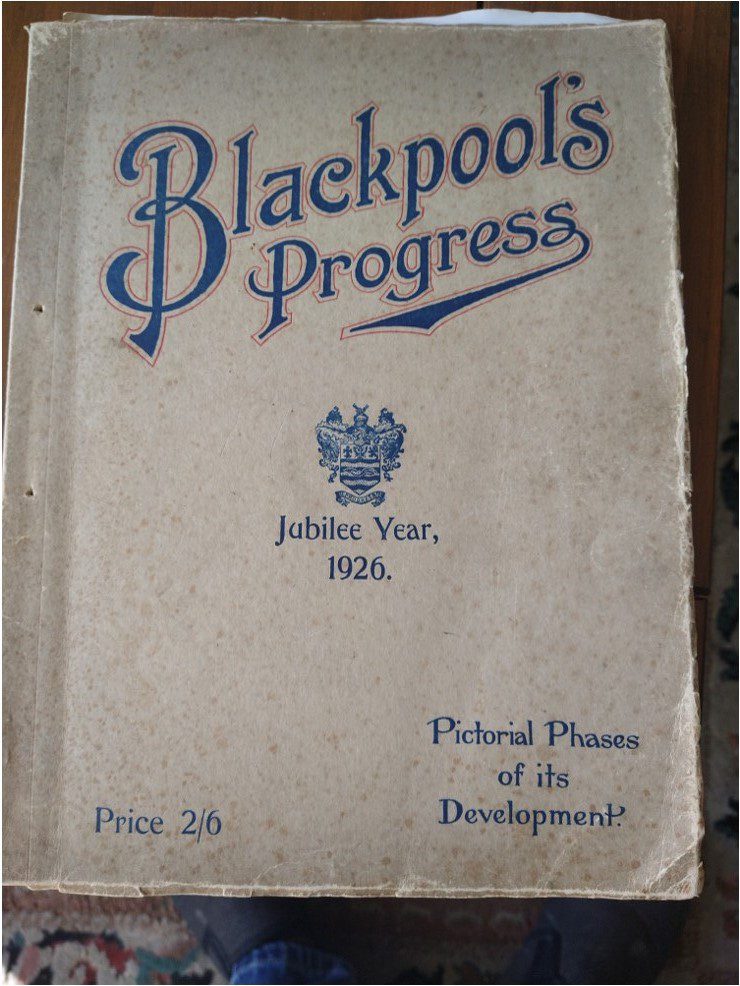
What an amazing book – we’d love a copy for our own archive. It’s packed full with 120 pages of pictures. Many of them we’ve never seen before. They document the building and growth of Blackpool – from sparsely populated streets to a busy resort.
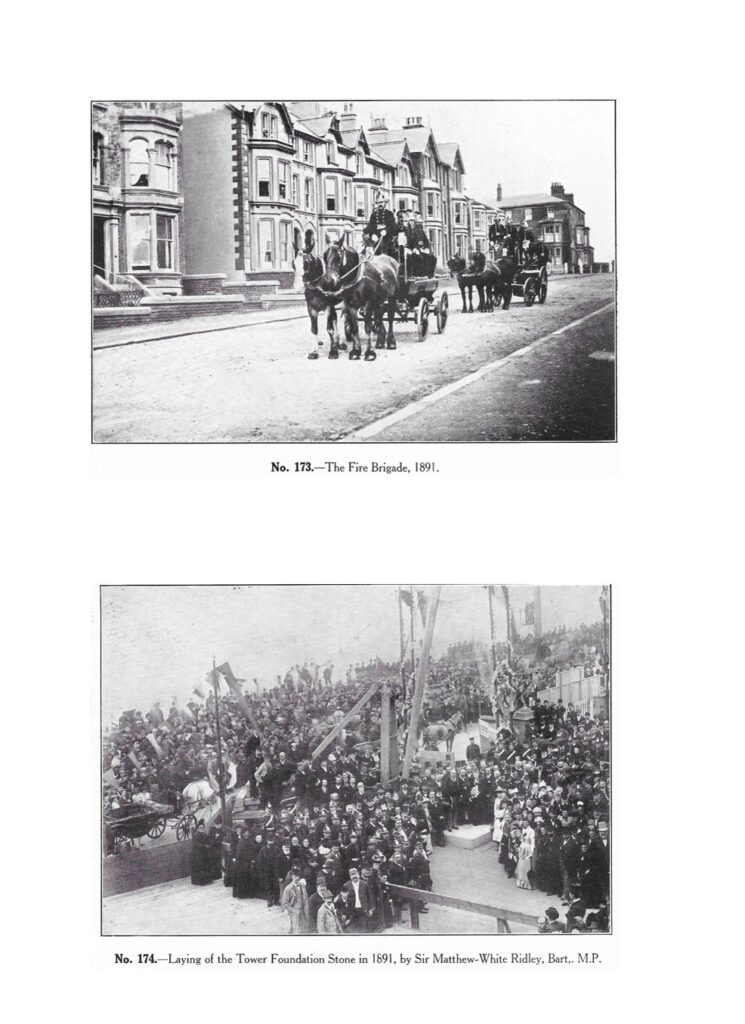
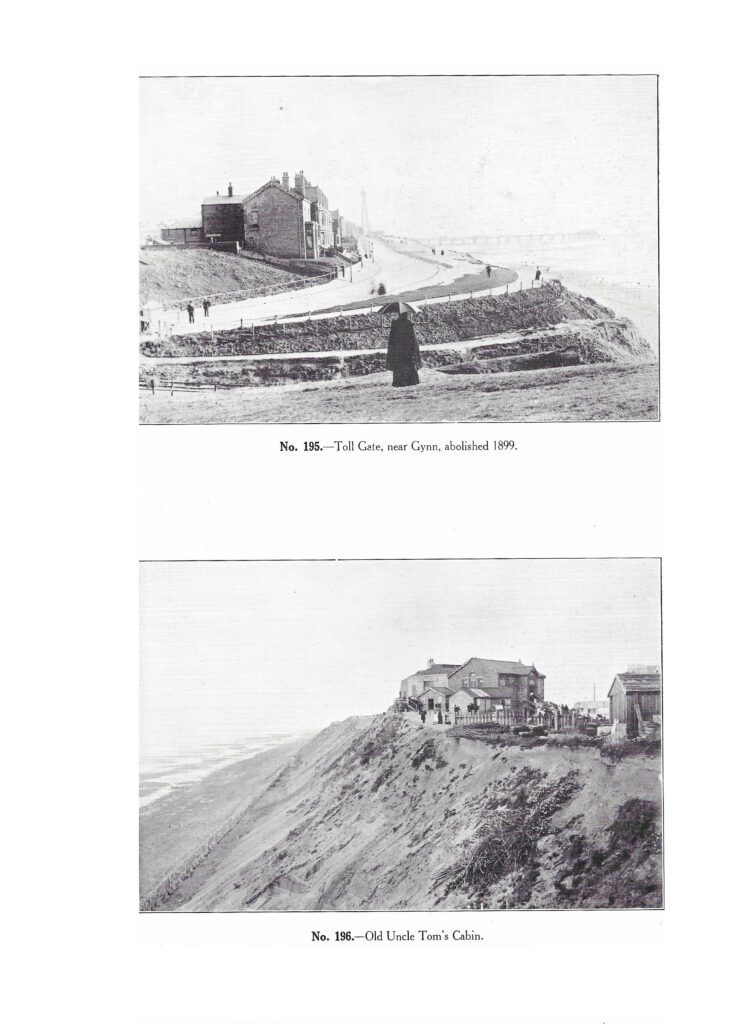
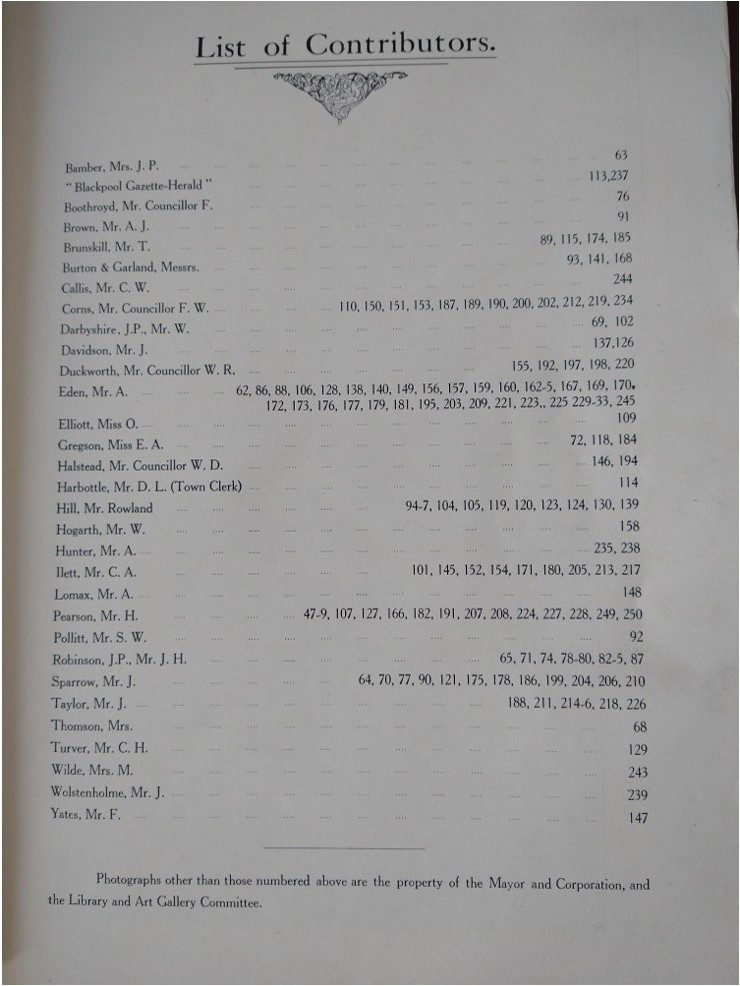
Mid 1900’s Blackpool and Today
The 1900’s saw the completion of many projects, each of them adding to the Blackpool experience of today.
Blackpool doesn’t rest on its laurels, and continues to shape, develop and grow. Explore the pages of this website to find out more about the history of Blackpool, and present day developments.
Recent years have seen the transformation of The Tower under the management of Merlin. New developments have taken place at the Pleasure Beach. New sea defences and promenades line the seafront. The historic Blackpool tramway has seen a complete upgrade. Plus many more changes and improvements all over town. There’s a current resurgence going on now, with building work everywhere you look!
More about the History of Blackpool and Growth of the Town
- Have a look through the other pages in this ‘History‘ section.
- Read Nick Moores history of Blackpool. It’s the most comprehensive guide of EVERYTHING to do with the history of Blackpool. We’ve used it as the source for a lot of information in this article. It’s fascinating – go take a look!
- Join Blackpool’s Past – the Original Facebook Group
Blackpool in Old Maps
As with most places, the streets, buildings and landmarks in Blackpool have changed with population growth over the years. With the help of an original Ordnance Survey map from 1910 you can see just how this has happened.
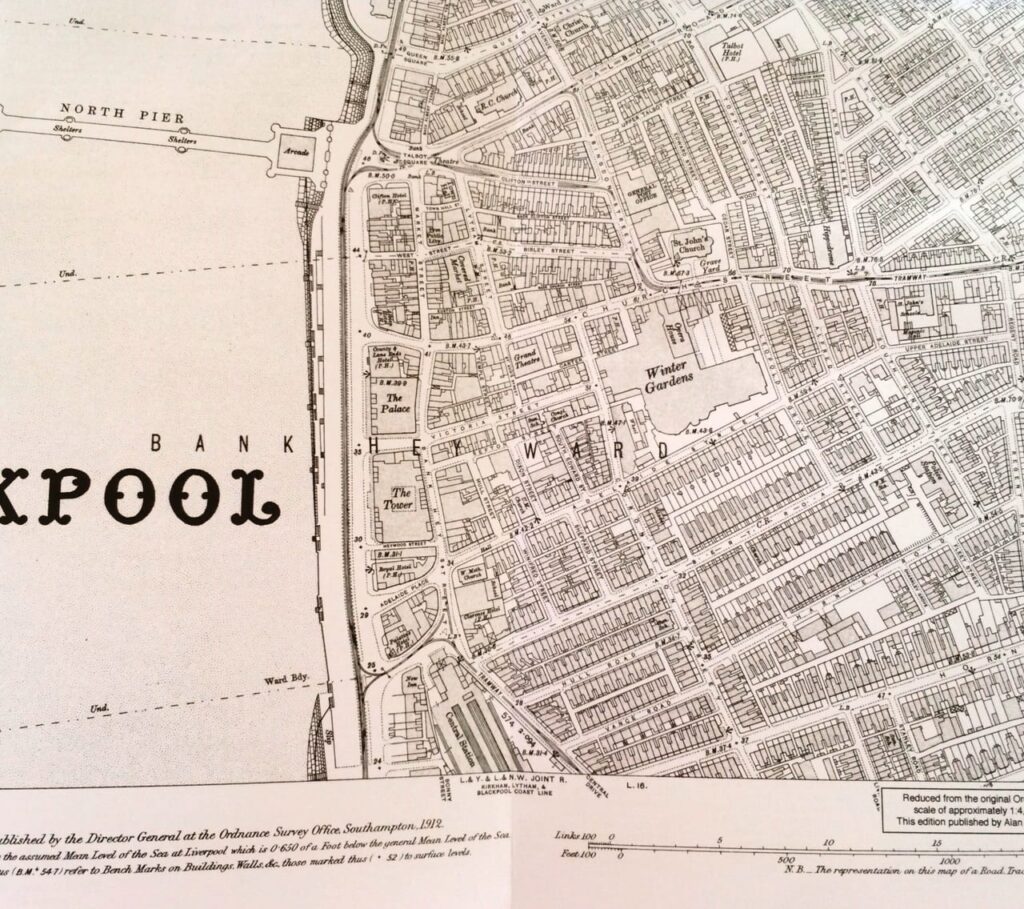
Godfrey Edition maps from the late 1800’s and early 1900’s are fascinating to look at and compare to what you know of the area today.
On the reverse of each map is a fairly thorough overview of the history of the area, which makes it doubly interesting. As an added bonus, the Blackpool maps also include a list of who lived where, cross referenced by street and house number (below), which makes fascinating reading.
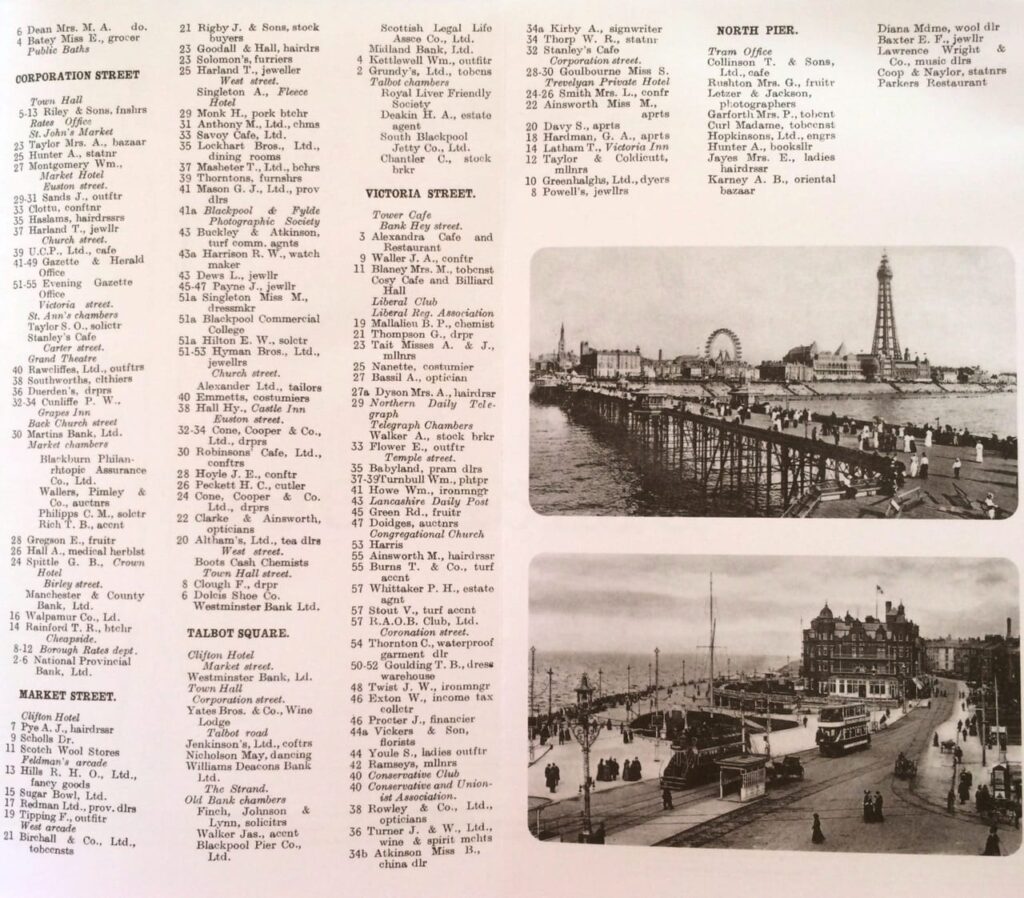
The North Pier and Town Centre Map of 1910 tells us that by the mid 1700’s people were visiting the town, but the growth of Blackpool was a little behind Brighton, Southport and Scarborough. By the time of this 1910 map, visitor numbers were approaching 4 million a year.
Blackpool landladies get a mention of course, all 3,457 of them at the date of the 1911 census. Seasonality of life in the resort also features then as it does now. 15.6% of the population needed help from the Chief Constable’s Relief Fund in the winter of 1909-10.
While you’re here…
What do you think? Why don’t you join in and leave a comment below?
Have a look at the homepage of the Live Blackpool website for more of the latest updates.
Love the Fylde Coast? Sign up for our weekly email newsletter. Packed full of interesting things it arrives in your inbox all 52 weeks of the year.
Join us on Facebook at our Visit Fylde Coast Facebook Group
Don’t forget to follow us on Twitter @visitFyldeCoast

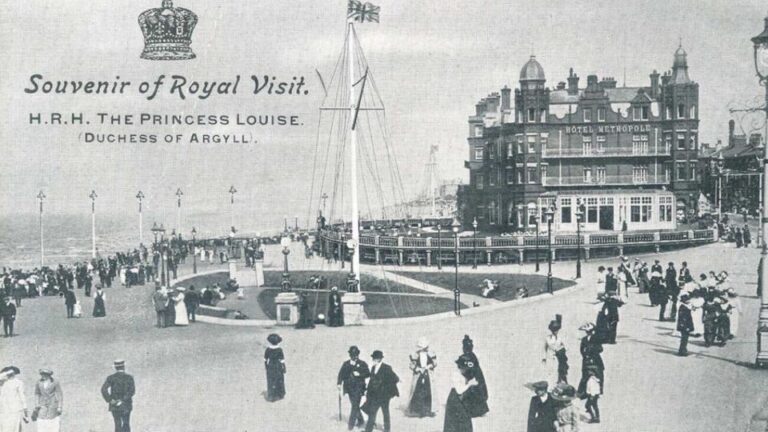






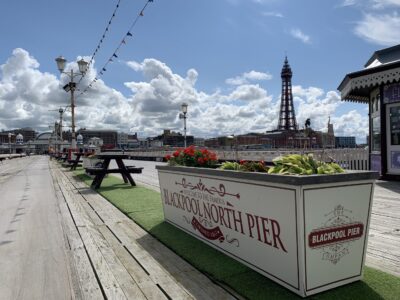

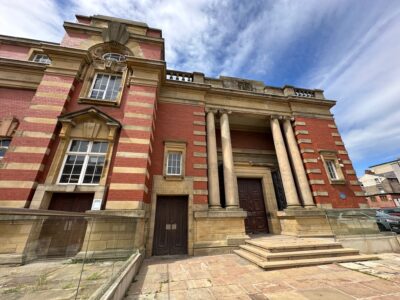

anybody remember my mum Mary Halpin nee roberts about 1930s to late 60s
We came across from Belfast with me aged 2. And delighted in what Blackpool had and has to offer. My gang cycled up to The Lakes and Brock Bottom. Miss lots, although Oxford is quite attractive – {been “down south” since 1982]. Better weather, better wages poorer friendliness.
Thanks for this history, interesting facts and arresting visuals. Area there audio guided tours? I’d pay to wander around the coast, listening to stories, and seeing the odd photo to compare to the current situation, as well as hear of protective developments.
My mother, Joanna Naesen, lived with her parents, sisters and brother in Blackpool during the Great War as Belgian refugees (from Zeebruges where the father worked). Whilst the brother joined the army, the two oldest sisters worked in the war industry (was there any in Blackpool?). My mother learned a profession , making ladies hats. For each hat made she earned 2/6. She was taught by a “premiere”, who had gone to Paris, and had the name Miss Hope. The address was Rose Bank, Pedders Lane on St. Anne’s Road.
Moreover she has been very impressed by the Winter Gardens.
Hi
Do you know anything about the Ellis brothers who apparently run Blackpool Post Office?
My grandma was called Rita Ellis, a daughter of one of the brothers.
Much appreciated if you know anything.
Regards
Diane